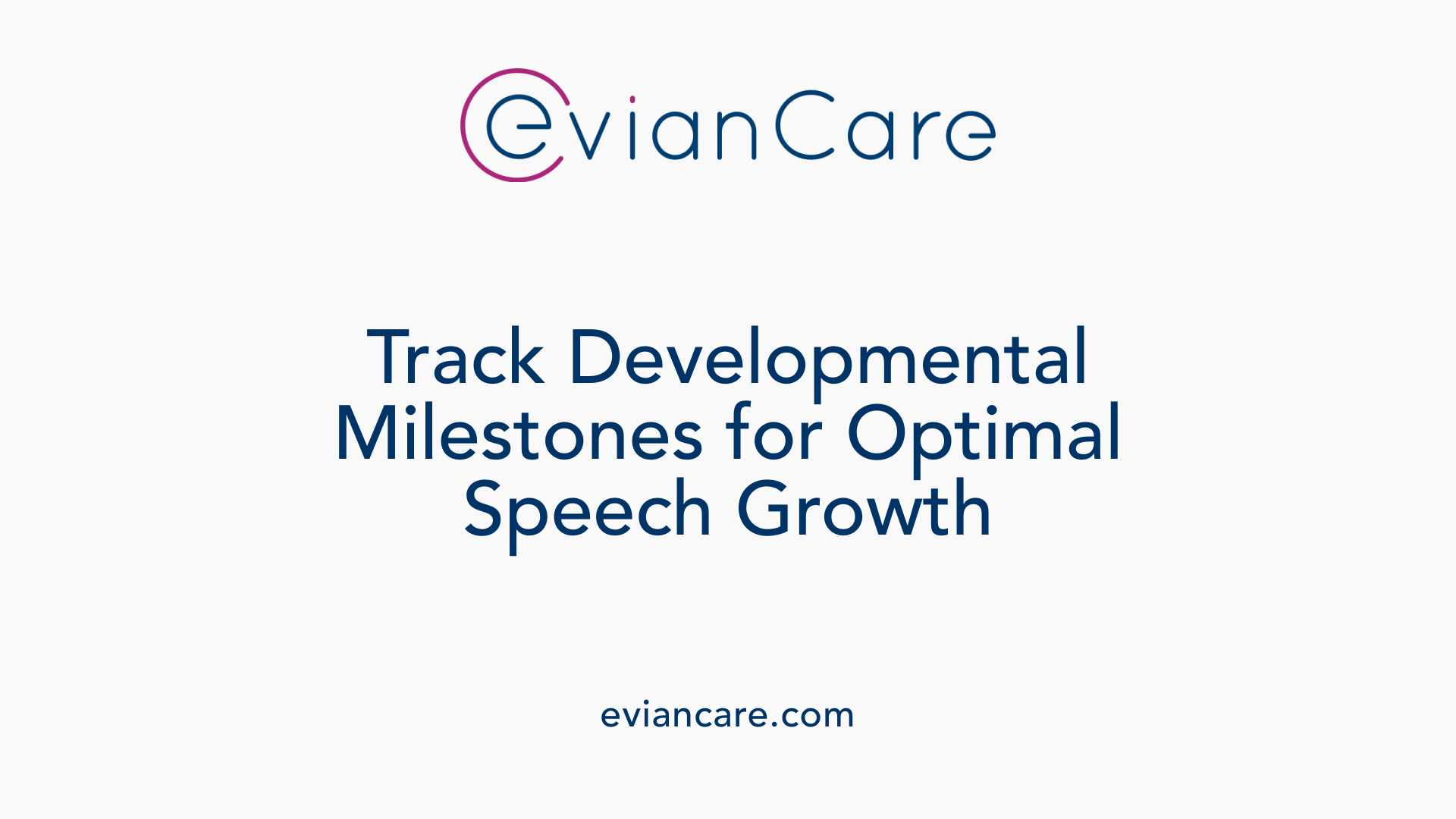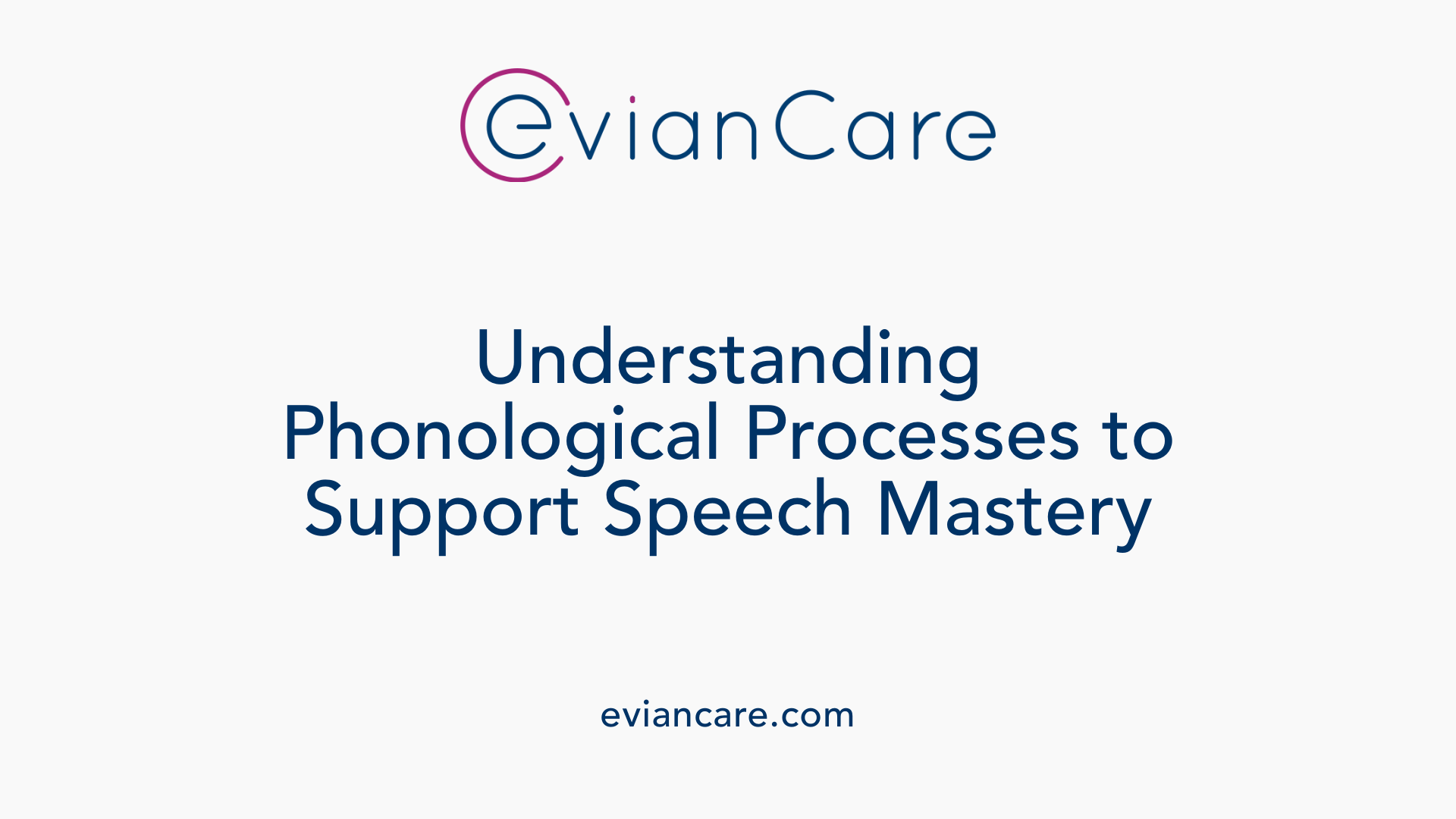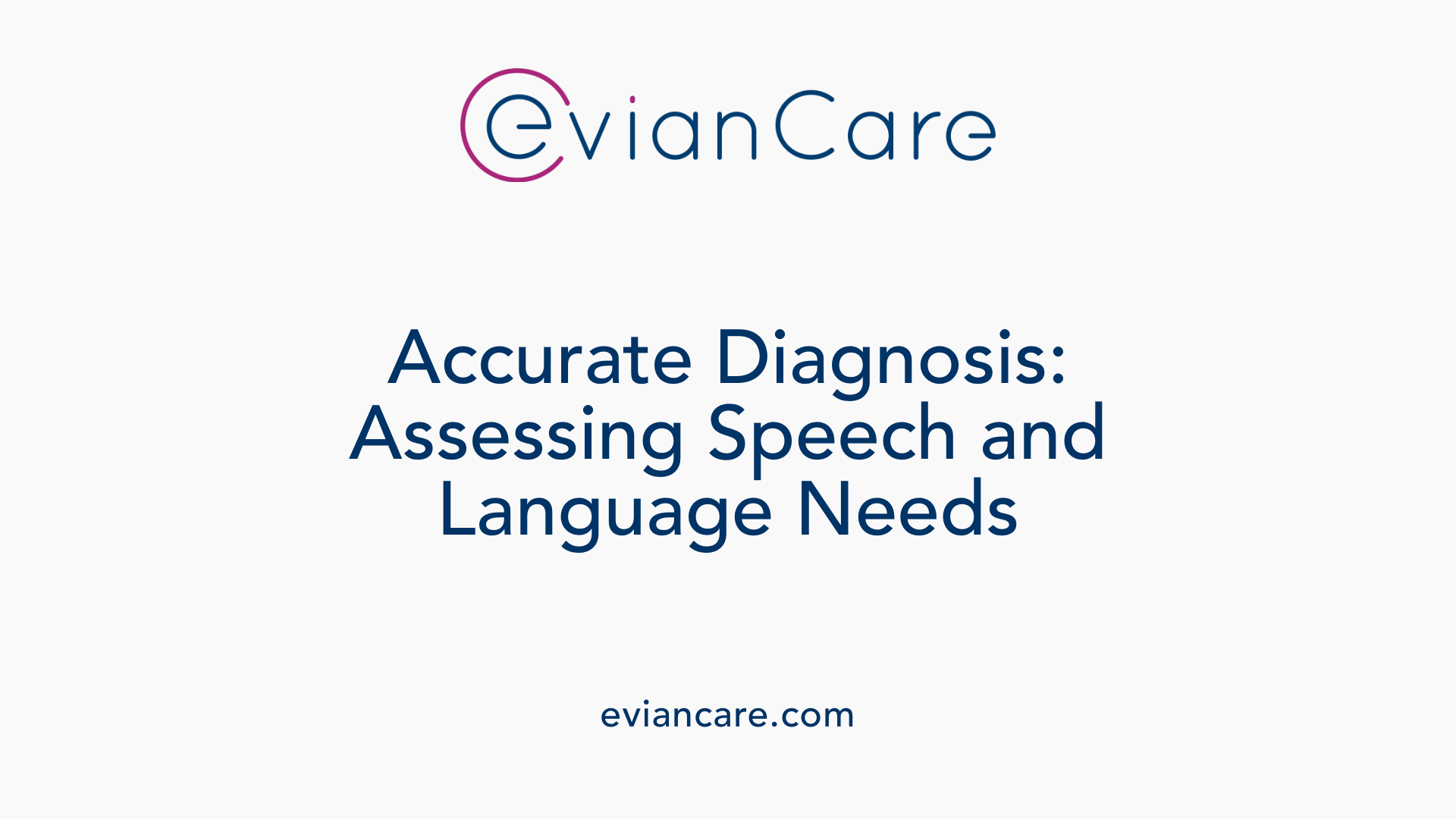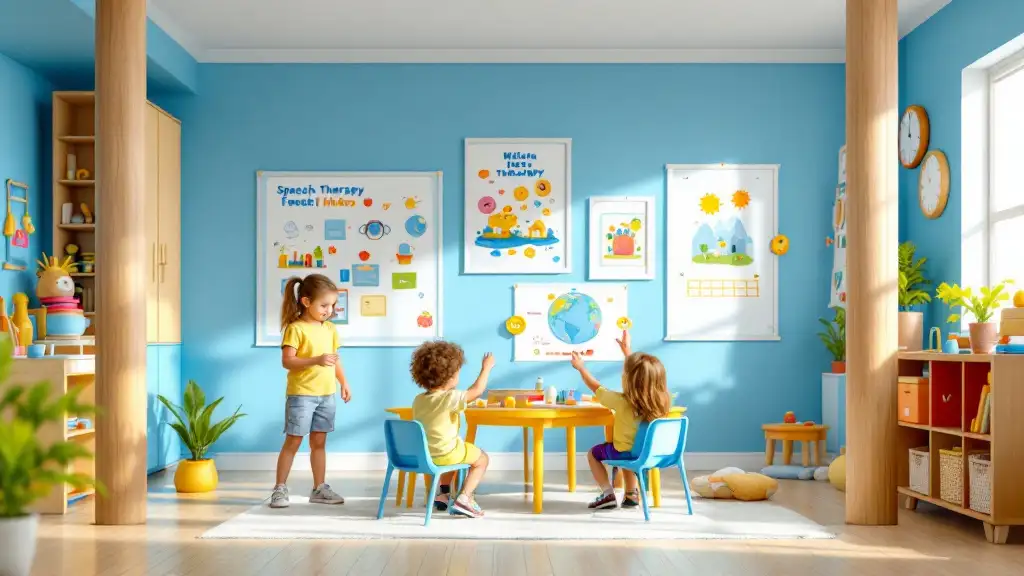
Understanding and Addressing Phonological Disorders in Childhood
Speech development in children follows a natural progression through various milestones, but some exhibit patterns of speech that deviate from typical developmental paths. These deviations, often called phonological disorders, involve complex patterns of errors affecting the child's speech intelligibility and overall communication. Recognizing these early signs, understanding assessment procedures, and applying effective, evidence-based treatments are crucial steps toward improving children's speech clarity and supporting their social, academic, and emotional well-being.
Developmental Milestones in Speech and Phonological Skill Development

What are developmental milestones related to speech and phonological skill development?
Understanding the progression of speech and phonological skills in children is essential for recognizing typical development and identifying early signs of disorders. These milestones chart a child's journey from early sounds to complex speech patterns.
In the earliest months, from birth to about 5 months, infants produce spontaneous sounds such as cooing and laughter. These sounds are primarily pleasure or displeasure expressions and mark the beginning of vocal exploration.
Between 6 and 11 months, babies typically enter the babbling stage. They experiment with repetitive consonant-vowel combinations like "ba-ba" or "da-da," which serve as precursors to actual words. During this period, children also recognize familiar sounds and respond to their name or simple commands, showing emerging listening and comprehension skills.
From 12 to 17 months, children usually begin saying their first words. These are often simple, such as "mama" or "ball," and are used intentionally to communicate needs or interests. They start imitating sounds and respond nonverbally to questions or commands, indicating growing understanding.
Between 18 months and 3 years, vocabulary rapidly expands to approximately 50 or more words. Children start combining words into simple phrases like "more juice" or "big dog." Speech accuracy improves, and children become better at producing sounds correctly, making their speech more understandable.
By the ages of 3 to 5 years, children develop longer sentences with more complex structures. They understand and use basic concepts like colors, spatial positions, and time. During this stage, speech clarity significantly improves, allowing others easily to understand their spoken language. This phase represents critical phonological development, as children refine their sound patterns and speech intelligibility.
Monitoring these milestones helps caregivers and professionals support optimal speech development and identify early signs of phonological or articulation disorders, leading to timely intervention when necessary.
Understanding Phonological Processes in Speech Therapy

What is a phonological process in speech therapy?
A phonological process in speech therapy refers to the patterns or rules that young children use to simplify or alter sounds in words during normal language development. These processes, such as cluster reduction, final consonant deletion, and fronting, are typical and usually resolve as the child's speech matures, typically by certain age milestones.
Some of the most common phonological processes include:
| Process Name | Description | Typical Age Range of Resolution | Effect on Speech Development |
|---|---|---|---|
| Cluster Reduction | Reducing consonant clusters (e.g., 'st' in 'star' becomes 'tar') | By age 4-5 | Simplifies complex sounds but usually resolves well before school age |
| Final Consonant Deletion | Omitting consonants at the end of words (e.g., 'dog' pronounced as 'do') | By age 3-4 | Usually outgrown, but if persistent, may affect intelligibility |
| Fronting | Replacing back sounds like 'k' and 'g' with front sounds like 't' and 'd' | By age 3-4 | Common at early stages; lingering fronting may require intervention |
| Backing | Substituting front sounds with back sounds (e.g., 'see' as 'co') | Usually not typical at any age and considered atypical | Often signals need for therapy, especially if persistent |
| Assimilation | Changed sounds based on neighboring sounds, like 'milk' to 'mull' | By age 3-5 | Usually resolves on its own but can impact clarity if persistent |
Normal resolution ages vary but generally, these processes fade as children approach age 5. Persistent use of certain patterns beyond this age can indicate ongoing phonological disorders.
Atypical processes like backing, which involve child-produced sounds that are not age-appropriate, often warrant assessment and might require targeted intervention from speech-language pathologists.
The impact of these persistent phonological processes can be significant. They may lead to reduced speech intelligibility, making it harder for others to understand the child. This can affect social interaction, academic success, and developing confidence in communication.
Early identification and intervention are crucial. Speech therapy techniques aim to correct these patterns, helping children develop accurate sound production and improve overall speech clarity. The goal is to foster normal speech development and support literacy and language skills as the child grows.
Signs and Symptoms Indicative of Speech Sound Disorders
What are common signs and symptoms of speech sound disorders in children?
Children with speech sound disorders (SSDs) often display several noticeable signs that indicate the need for assessment by a speech-language pathologist. One of the most common indicators is consistent speech errors, such as substitutions where one sound is replaced by another, omissions where sounds are left out, distortions that change the clarity of sounds, and additions like extra sounds inserted into words. These errors tend to occur regularly and can make their speech difficult for others to understand.
In addition, children may demonstrate specific speech patterns that deviate from typical development. They might simplify words by reducing syllable complexity (e.g., saying "cuh" instead of "cup"), omit consonants, or produce only one syllable in words that should have multiple. Such simplifications reflect difficulty with phonological rules or motor speech production.
Many children also experience trouble pronouncing certain sounds correctly. They might produce inconsistent pronunciations of the same word, which can be confusing for both the child and the listener. This inconsistency often suggests underlying phonological or motor issues affecting speech accuracy.
Behavioral signs include avoidance of speaking, shyness, or social withdrawal due to embarrassment about their speech difficulties. Children may feel self-conscious and hesitant to participate in conversations or group activities.
Additional indicators include physical signs such as lisps, which involve a lisping or misarticulation of sibilant sounds like /s/ and /z/. Some children may also exhibit symptoms of stuttering or motor speech problems like childhood apraxia of speech, which involve difficulty planning or coordinating the muscle movements needed for speech.
Detecting these signs early and seeking assessment from qualified speech-language pathologists can lead to effective intervention strategies. Early treatment can significantly improve speech clarity and boost confidence and social interactions for children experiencing these challenges.
| Sign or Symptom | Description | Typical Age Onset |
|---|---|---|
| Consistent speech errors | Substitutions, omissions, distortions, additions | Throughout speech development, especially if persistent |
| Patterned speech simplification | Word reduction, syllable reduction | Early childhood |
| Pronunciation difficulties | Inconsistent or incorrect production of sounds | All ages, especially before age 7 |
| Behavioral signs | Shyness, avoidance, social withdrawal | Around age 2-6 |
| Physical signs | Lisp, articulation issues, motor speech problems | Varies, often noticed early |
More information on signs of speech sound disorders in children can be found by searching for "signs of speech sound disorders in children."
Diagnosis and Assessment of Phonological Disorders

How are phonological disorders assessed and diagnosed?
Diagnosing phonological disorders in children requires a thorough assessment process conducted by qualified speech-language pathologists (SLPs). The evaluation begins with collecting speech samples from the child, both in isolated words and connected speech, to observe speech intelligibility and identify any patterns of errors.
Clinicians analyze error types and patterns, looking for typical developmental mistakes versus atypical phonological processes. They pay close attention to error consistency, error types such as substitutions or deletions, and whether these errors affect overall speech comprehensibility.
A variety of tools are used in this assessment. Standardized tests provide normative data and help identify deviations from typical speech development. Informal, or criterion-referenced, assessments complement standardized measures by allowing observation of speech in naturalistic settings.
Dynamic assessment techniques, which involve interactive testing and learning trials, help determine the child's ability to acquire and utilize different speech skills and strategies.
Equally important is evaluating phonological processing skills, which include phonological awareness, memory, and retrieval abilities. Tasks such as receptive phonological awareness activities and nonword repetition exercises are used to assess these skills while minimizing speech production errors.
The assessment also involves an oral mechanism exam to evaluate the physical structures involved in speech, such as the lips, tongue, palate, and jaw. Hearing screenings are essential to rule out hearing impairments that could influence speech development.
In addition, understanding the child's linguistic and cultural background ensures that assessment results are interpreted appropriately, avoiding misdiagnosis due to dialectal or language differences.
Ultimately, the diagnosis distinguishes between typical developmental variation, delay, or disorder. This involves analyzing error patterns for features like complexity, consistency, and error types, helping to determine whether intervention is necessary and guiding tailored therapy approaches.
Below is a summary table of assessment components:
| Assessment Aspect | Description | Purpose |
|---|---|---|
| Speech sampling | Collecting speech samples in various contexts | Analyze error patterns and intelligibility |
| Standardized tests | Norm-referenced tools (e.g., Arizona-4) | Quantify speech production accuracy |
| Informal assessments | Observation and clinician-designed tasks | Gather natural speech data |
| Dynamic evaluation | Interactive assessment methods | Assess learning potential and responsiveness |
| Phonological processing tests | Phonological awareness, nonword repetition | Evaluate cognitive-linguistic skills |
| Oral mechanism exam | Physical structure evaluation | Check for anatomical or motor issues |
| Hearing screening | Audiological assessment | Exclude hearing impairments |
| Cultural considerations | Review linguistic background | Ensure accurate interpretation |
This comprehensive approach ensures accurate diagnosis, helping to differentiate phonological disorders from other speech or language issues, and facilitates effective intervention planning.
Distinctive Features of Articulation and Phonological Disorders
How do speech sound disorders differ from articulation disorders?
Speech sound disorders (SSDs) include difficulties related to the production and use of speech sounds, and they are generally categorized into two main types: articulation disorders and phonological disorders.
Articulation errors are motor-based issues that affect the physical production of specific sounds. These errors often involve substitution, omission, distortion, or addition of individual speech sounds. For example, a child might substitute the r-sound with a w-sound, or they might distort the s-sound, leading to lisps or unclear speech.
On the other hand, phonological errors are patterns of errors stemming from a child's understanding and application of the language's sound system rules. These errors tend to affect groups or classes of sounds, such as all final consonants being omitted or particular sounds being replaced systematically. Common phonological processes include fronting (substituting a back sound with a front sound), backing, or cluster reduction.
The core difference lies in the origin: articulation difficulties are motor issues involving the physical movement of speech muscles, whereas phonological errors are related to language and cognitive processing of sound patterns.
Assessment and treatment approaches differ accordingly. Articulation therapy often focuses on improving the motor movements required for specific sounds, involving individual sound practice and motor exercises. Phonological therapy, however, targets the underlying patterns and rules, using activities like minimal pairs and contrasting sounds to reshape the child's understanding of sound classes.
Both speech sound disorders can degrade speech intelligibility and hinder effective communication, but understanding their differences allows clinicians to choose the most appropriate intervention. Early diagnosis and targeted therapy can significantly improve speech clarity and support broader language development, literacy skills, and social confidence.
Treatments and Therapy Approaches for Phonological Disorders

How are treatments for phonological disorders tailored to individual children?
Effective treatment begins with a thorough assessment to identify specific error patterns and phonological processes. Based on these findings, speech-language pathologists develop personalized therapy plans that target the child's unique speech errors. For example, if a child exhibits a pattern of backing or final consonant deletion, therapy focuses on reducing these specific processes.
Therapists also choose approaches aligned with the child's needs, emphasizing either phonological or articulatory strategies. The intervention may combine various methods to best support the child's speech development, incorporating structured practice routines.
What treatment approaches are used for phonological disorders?
Several prominent therapy strategies are employed to address phonological errors:
| Approach | Description | Typical Use Case | Additional Notes |
|---|---|---|---|
| Cycles | Brief, repeated intervention on phonological processes in cycles | Children with multiple processes or severe unintelligibility | Targets multiple errors over time, without focusing on mastering one before moving to the next |
| Minimal Pairs | Uses pairs of words that differ by one sound to teach discrimination | When children struggle to differentiate similar sounds | Enhances phonological contrasts, improving discrimination and production |
| Maximal Oppositions | Uses pairs with maximum feature differences to highlight contrasts | For children with more severe phoneme collapse | Promotes broader generalization of correct sounds |
| Multiple Oppositions | Combines sets of contrasts for a range of sounds | Children with extensive errors across sound classes | Focuses on contrasting multiple sounds simultaneously |
| Phonotactic Therapy | Focuses on the rules for sound combinations | Children with syllable structure errors or CAS | Emphasizes correct sound sequencing |
| Core Vocabulary | Concentrates on improving consistency in producing a set list of words | Severe or inconsistent speech disorders | Builds a stable vocabulary of correctly produced words |
In addition to phonological articulation exercises, some techniques target motor speech production, such as precise placement of the tongue and lips.
What structured practices support phonological development?
Therapy often employs structured, repetitive practice methods:
- Vertical Practice: Focuses intensely on one sound or pattern in a session.
- Horizontal Practice: Targets multiple sounds or patterns in the same session.
- Cyclical Practice: Rotates through different phonological targets over days or weeks, ideal for children with multiple errors.
These structured approaches enable consistent practice and reinforce learning, ultimately leading to better speech intelligibility.
Why is early, individualized, evidence-based intervention crucial?
Early diagnosis and personalized therapy are vital for successful outcomes. Implementing strategies supported by research helps children improve their speech, leading to better academic performance, social interactions, and self-confidence. Continual assessment and therapy adjustments ensure that treatment remains effective as the child's speech develops.
By combining these methods, speech-language pathologists create comprehensive, effective treatment plans designed to address each child's unique speech challenges and promote clear, confident communication.
The Impact and Efficacy of Speech Therapy in Children
Improvement in speech intelligibility and clarity
Speech therapy plays a crucial role in enhancing children’s speech clarity, especially those with phonological and articulation disorders. Through targeted exercises and consistent practice, children often make significant progress in producing sounds correctly, resulting in clearer speech that is easier for others to understand. Therapy strategies like minimal pairs or maximal oppositions help children differentiate sounds and correct their errors, boosting overall intelligibility.
Early intervention benefits
Research highlights the importance of early intervention for children with speech sound disorders. The earlier therapy begins, the more effective it tends to be. Early treatment exploits the brain's natural plasticity, making it easier for children to develop proper sound production patterns. Most children who receive intervention before school age experience faster progress and often outgrow more phonological patterns, reducing long-term speech and literacy difficulties.
Tailored therapy plans based on individual needs
Effective therapy is personalized to each child's unique profile. Speech-language pathologists assess whether a child has articulation or phonological issues and choose the most appropriate intervention. For example, children with articulation errors might benefit from traditional articulation therapy, while those with phonological processes may respond better to phonological approaches like cycles or minimal pair therapy. Therapy goals focus on establishing correct sounds, generalizing skills across contexts, and maintaining progress.
Research support and evidence-based practice
The effectiveness of speech therapy is supported by a body of researched-based evidence. Most studies include case reports, controlled studies, and some randomized controlled trials that verify the positive outcomes of various intervention approaches. Resources such as textbooks, the ASHA Practice Portal, and scientific articles reinforce that using evidence-based methods—like cycles, minimal pairs, and phonotactic therapy—leads to improved speech patterns, better intelligibility, and enhanced language skills.
The role of speech-language pathologists in delivering effective therapy
Speech-language pathologists (SLPs) are essential in delivering tailored, professional care. They conduct comprehensive assessments considering linguistic, dialectal, and cultural factors, especially in multilingual contexts. SLPs develop individualized treatment plans, incorporate various therapy techniques, and monitor progress, adjusting strategies as needed. Their expertise ensures that children receive evidence-based, effective interventions that target their specific speech needs.
| Aspect | Details | Additional Notes |
|---|---|---|
| Types of disorders | Articulation vs. phonological disorders | Differentiating helps select suitable therapy |
| Common approaches | Minimal pairs, cycles, maximal oppositions, core vocabulary | Each targets different error patterns |
| Assessment considerations | Standardized tests, spontaneous speech, dialectal influences | Ensures culturally appropriate evaluation |
| Therapy settings | Individual and group sessions | Depending on needs and therapy type |
| Evidence sources | Case studies, controlled studies, RCTs | Support for proven methods |
Understanding how speech therapy can improve speech sounds and clarity emphasizes the importance of early and individualized intervention. When delivered by skilled SLPs and supported by research, children with speech sound disorders can achieve significant communication improvements, fostering better social, academic, and emotional development.
Resources and Guidance for Parents, Educators, and Practitioners
 Finding effective resources for speech therapy can support children with speech sound disorders and help caregivers and educators reinforce therapy goals at home or in the classroom.
Finding effective resources for speech therapy can support children with speech sound disorders and help caregivers and educators reinforce therapy goals at home or in the classroom.
Professional speech-language pathologists (SLPs) are essential in providing personalized assessments and tailored intervention strategies. These experts evaluate children’s specific speech patterns and recommend targeted approaches to improve articulation and phonology.
Aside from clinical services, a variety of educational materials are available for at-home practice. These include therapy games, flashcards, handouts, coloring books, and activity sheets designed to make practicing speech sounds fun and engaging for children.
Many online resources offer free downloadable tools, activity guides, and videos. These materials provide step-by-step instructions and exercises suited for different age groups and developmental levels, helping parents and teachers incorporate speech practice into daily routines.
Support organizations such as ASHA (American Speech-Language-Hearing Association), Smile Train, and Teach Me to Talk provide valuable, multilingual resources. Their websites include developmental milestones, activity ideas, and comprehensive guides to speech development.
Web platforms like pathways.org also feature expert advice, progress tracking tools, and tailored developmental information to facilitate ongoing support.
In addition, online channels like the Walkie Talkie Speech Therapy YouTube channel offer practical tips and demonstrations for parents and practitioners. These videos show techniques for articulation practice, breathing exercises, and ways to encourage language use.
By utilizing these available resources, caregivers and educators can create a supportive environment that promotes consistent speech development and enhances the effectiveness of formal therapy sessions.
Summing Up the Path to Clearer Communication
Effective speech therapy for children with phonological disorders hinges on early assessment, personalized intervention, and the application of evidence-based practices. Speech-language pathologists are equipped with a repertoire of proven techniques, from phonological contrast therapies to phonotactic interventions, which can significantly improve speech intelligibility and overall communication. The progression from recognizing early signs, understanding the child's unique error patterns, and engaging in targeted therapy, whether individual or group, provides the best foundation for successful outcomes. Support from educators, parents, and the wider community further reinforces therapy gains. Staying informed through reputable resources and continuous professional development remains essential in delivering optimal care. Ultimately, timely, comprehensive intervention supports children in overcoming speech challenges, boosting their confidence, and enabling more effective participation in social and academic contexts.
References
- Speech Sound Disorders: Articulation and Phonology - ASHA
- Treatment approaches for speech sound disorders - The Informed SLP
- [PDF] Phonological Interventions for Children with Speech Sound Disorders
- Articulation and Phonological Therapy Approaches: How to Choose
- Speech problems – articulation and phonological disorders
- Phonological awareness training and phonological therapy ...
- Phonological Processing Disorder: What Is It & What to Do?
- What Are Phonological Disorders, and How Are They Treated?
- Phonological disorder Information | Mount Sinai - New York
- Advances in the treatment of children with phonological disorders












